Q
How long has Proton Saga been on the market?
The Proton Saga was first launched in 1985 by Proton, Malaysia’s national carmaker, making it 39 years old today. As one of the most iconic economy cars in the country, the Saga has been a key part of Malaysia’s automotive journey.
The first-generation model was based on the Mitsubishi Lancer Fiore platform and gained a reputation for its durability and affordability. Over the years, the Saga has gone through several updates. The current fourth-generation version debuted in 2019 and features a 1.3L VVT engine along with safety tech like Electronic Stability Control (ESC).
For many Malaysian families, the Saga wasn’t just a car. It was their first car. Its budget-friendly price tag and low running costs made it a popular choice. The latest model also earned a four-star safety rating from ASEAN NCAP.
After Proton partnered with Geely, the Saga received several modern upgrades. It now offers improved fuel efficiency and added tech such as a 7-inch touchscreen and a reversing camera. These updates show that this classic nameplate continues to evolve with the times.
More than just a vehicle, the Proton Saga stands as a symbol of Malaysia’s automotive heritage. Its long-standing success reflects Proton’s ability to meet changing market demands while staying true to its roots.
Special Disclaimer: This content is published by users and does not represent the views or position of PCauto.
Related Q&A
Q
What is the fuel tank capacity of the Proton Saga?
The Proton Saga has a fuel tank capacity of 40 liters. This design can meet the needs of daily commuting and medium - short distance trips while taking fuel economy into account. As a classic model of a Malaysian local brand, the fuel tank capacity of the Saga matches the fuel consumption performance of its 1.3 - liter engine. Under urban driving conditions, it usually offers a cruising range of about 500 kilometers, and the cruising ability will be further improved when driving on the highway.
It's worth mentioning that the fuel tank capacity is one of the important factors to consider when buying a car. It not only affects the driving distance but also relates to the vehicle's weight distribution and chassis design. For users who often drive long distances, a larger fuel tank means fewer refueling times, while urban users may pay more attention to fuel efficiency. The Proton Saga has found a good balance in this regard, ensuring practicality while maintaining the flexibility and economy of a compact car.
In addition, regular inspection of the fuel tank and fuel system is also important for maintaining the vehicle's performance. It is recommended that car owners follow the official maintenance manual for maintenance.
Q
Does Proton Saga Equip with a reverse camera?
Yes, some models of the Proton Saga are indeed equipped with a reversing camera. It specifically depends on the configuration version you choose. For example, the Premium and ACE versions come with a reversing camera as standard, while the Standard version doesn't have this feature. So, it's recommended to select the appropriate configuration according to your needs and budget before making a purchase. The reversing camera is very useful in Malaysia's traffic environment, especially in narrow parking spaces or crowded streets. It helps drivers see the obstacles behind more clearly, enhancing safety. In addition to the reversing camera, the Proton Saga is also equipped with other practical safety features, such as ABS, EBD, and rear parking sensors. These configurations are quite competitive among vehicles in the same class. If you're interested in automotive technology, you can also learn about the assisted - driving features of models from other brands at a similar price point. For instance, some models may offer a 360 - degree panoramic camera or a blind - spot monitoring system, but these usually appear in higher - end versions or brands. Overall, as an economical and practical family car, the Proton Saga offers configurations that match its price in terms of safety and convenience, making it suitable for the daily needs of Malaysian consumers.
Q
Does Proton Saga Equip with ABS?
Yes, some models of the Proton Saga are indeed equipped with the Anti-lock Braking System (ABS), which specifically depends on different versions and years. For example, the 2023 Proton Saga Premium version comes standard with ABS, while older base versions may not have this feature. It is recommended to check the specific configuration list before purchasing a car to confirm. ABS is an important safety technology that can prevent the wheels from locking up during emergency braking, helping the driver maintain control of the vehicle, especially on slippery roads, and it's very practical for Malaysia's rainy climate.
In addition to ABS, modern cars are often equipped with systems such as EBD (Electronic Brakeforce Distribution) and BA (Brake Assist), which together enhance driving safety. As a national brand in Malaysia, Proton has always been committed to improving the safety performance of its vehicles. In recent years, new cars have made significant progress in safety configurations. Consumers can choose the appropriate version according to their budget and needs.
Q
What is the safety rating of the Proton Saga?
The safety configuration of the Proton Saga provides a certain level of safety assurance. It comes standard with an ABS anti-lock braking system, which can prevent the wheels from locking up during emergency braking, allowing the vehicle to maintain a certain steering ability and avoid losing control. The seat-belt reminder function can promptly remind the driver to fasten the seat belt. It is also equipped with 2 airbags, namely the driver-side and front-passenger-side airbags, which can reduce the injuries to the driver and passengers in the event of a vehicle collision.
In addition, the ISO FIX child-seat anchor points make it easy to install a child seat, ensuring the safety of children in the car. Some versions also feature functions such as electronic stability control and hill - start assist. Electronic stability control helps keep the vehicle stable while driving, and hill-start assist can prevent the vehicle from rolling back when going uphill.
However, the specific safety ratings may vary depending on the standards and testing methods of different evaluation agencies.
Q
What is the fuel average of Proton Saga?
The official combined fuel consumption of the Proton Saga is 6.7L per 100km. This car is positioned in the A-Segment. It is equipped with a 1.3L naturally aspirated engine, and its power output can meet the needs of daily driving. With such fuel consumption performance, it has certain advantages among models in the same class. It can help car owners save on fuel expenses, making it suitable for consumers who attach great importance to fuel economy. Whether it's for city commuting or short trips, fuel costs can be controlled, thus reducing the burden of car use.
Q
What is the top speed of a Proton Saga?
The maximum speeds of Proton Saga models vary across different years and versions. The 2018 Proton Saga 1.3 Standard MT has a maximum speed of 160 km/h, while the 2018 Proton Saga 1.3 Standard CVT, Executive CVT, and Premium CVT all have a maximum speed of 155 km/h. Information regarding the maximum speed is not mentioned in the data of models from 2019 - 2023. These figures are the officially announced theoretical maximum speeds. In actual driving, it's quite difficult to reach these speeds due to various limiting factors such as road conditions, vehicle load, driving habits, and traffic regulations.
Q
Which country made the Proton Saga?
The Proton Saga is a car made in Malaysia. Proton, a domestic car brand, was established in 1983 under the leadership of Mahathir, the current Prime Minister of Malaysia. In 1985, Proton's first model, the Proton Saga, made its debut. The "Saga" in the car's name refers to the Adenanthera pavonina, a common type of seed in Malaysia, and it was named by a retired military man. Proton has a complete automobile production line and independent R & D capabilities. As an important model of Proton, the Proton Saga is naturally a representative product made in Malaysia, and it has witnessed the development of the Malaysian automotive industry.
Q
What is VVT in Proton Saga?
VVT stands for Variable Valve Timing, which refers to the engine's variable valve timing technology. On the Proton Saga, this technology can adjust the intake (exhaust) volume, valve opening and closing time, and angle according to the engine's operating conditions, so as to optimize the amount of incoming air and improve combustion efficiency.
Its working principle is to install a solenoid valve on the engine camshaft. By controlling the switch of the solenoid valve, the opening and closing time of the valves is adjusted to control the intake volume. At low speeds, VVT allows the valves to open earlier and close later, increasing the intake volume, enhancing combustion efficiency, boosting power, and reducing fuel consumption. At high speeds, it enables the valves to open later and close earlier, reducing the intake volume, improving engine efficiency, and reducing noise and vibration. However, the VVT technology has the drawback of insufficient torque at medium speeds. Therefore, when choosing a car, consumers should consider whether to opt for the Proton Saga model equipped with VVT technology based on their own driving habits and needs.
Q
Is Proton Saga fuel-efficient?
As one of the most popular economy cars in Malaysia, the Proton Saga's fuel economy performance meets the mainstream level of vehicles in this class. It is equipped with a 1.3L naturally aspirated engine paired with a 4-speed automatic or 5-speed manual transmission. The officially announced fuel consumption data is 5.6 to 6.0 liters per 100 kilometers (the actual fuel consumption may vary slightly depending on driving habits and road conditions). It is a relatively fuel-efficient choice for daily city commuting or long-distance driving.
The car adopts a lightweight body design and an optimized powertrain tuning, which further improves fuel efficiency. It is especially suitable for the usage scenarios in Malaysia with many traffic lights and congested roads. To further enhance the fuel-saving effect, it is recommended to conduct regular maintenance (such as replacing the air filter and using the recommended viscosity of engine oil) and develop driving habits like smooth acceleration and anticipatory deceleration.
In comparison with other models in the same class, its fuel consumption performance is similar to that of competitors like the Perodua Bezza and Honda City. However, the Saga has become a popular choice among budget-conscious consumers thanks to its more affordable price and lower maintenance costs. It's worth noting that the Proton Saga also meets the relevant standards of the EEV (Energy-Efficient Vehicle) certification launched by the Malaysian government, which indirectly confirms that its fuel economy has reached the industry's energy-saving requirements.
Q
What is the body type of the Proton Saga?
The Proton Saga is a four-door sedan. This is the most classic body style for entry-level family cars in Malaysia. Its structure includes a separate engine compartment, passenger compartment, and luggage compartment, which combines daily practicality with fuel economy. As Proton's longest-standing car series, the Saga has always adopted a three-box design since its launch in 1985. The current third-generation model (2023 version) continues this tradition. The body dimensions are 4,413mm×1,689mm×1,491mm, with a wheelbase of 2,465mm, providing spacious seating and a trunk capacity of 395 liters.
Three-box sedans are highly favored in Malaysia. This is mainly due to their well-sealed cabins, which are suitable for the tropical rainy climate, and their storage layouts that are more suitable for family trips. At the same time, this type of vehicle also maintains a relatively high residual value in the second-hand car market. It's worth noting that competitors in the same class, such as the Perodua Bezza, also use a similar three-box structure. However, the Saga has an advantage in terms of ride comfort thanks to its longer wheelbase and more mature chassis tuning. This body style also gives it better stability than hatchbacks when driving at high speeds.
Latest Q&A
Q
How long is the BMW M5 2025?
The body length of the 2025 BMW M5 is expected to be around 4,960 millimeters, similar to the current model. It continues the elegant proportions of its sporty four - door sedan, while balancing daily practicality and high - performance needs. For Malaysian consumers, this size still offers flexibility when driving or parking in the city, and the longer wheelbase ensures the comfort of rear - seat passengers.
It's worth mentioning that as a representative of BMW's high - performance vehicle series, the body design of the M5 not only focuses on aerodynamic efficiency but also enhances handling performance through lightweight materials (such as the carbon fiber roof). The hot and rainy climate in Malaysia places high demands on vehicle heat dissipation and sealing. The M5's heat dissipation system and body joint craftsmanship have undergone rigorous testing and can adapt to the local environment.
In addition, when making a purchase, you can pay attention to whether the Malaysian version comes standard with features like a panoramic sunroof. This kind of design can enhance the driving and riding experience in tropical regions. If you're considering a parallel - imported vehicle, note that there may be slight differences in body length among different market versions. It's recommended to obtain accurate specification data through official channels.
Q
How heavy is the BMW M5 2025 in kg?
The 2025 BMW M5 is expected to weigh around 2,300 kilograms, a slight increase compared to the previous model. This is mainly due to the addition of its plug - in hybrid system. This system combines a 4.4 - liter V8 twin - turbocharged engine with an electric motor, providing stronger power output but also increasing the vehicle's weight. For Malaysian car enthusiasts, although the weight of this high - performance sedan is a bit higher, its advanced chassis tuning and xDrive all - wheel drive system can still ensure excellent handling performance, which is especially suitable for the local changeable road conditions. It's worth mentioning that the addition of hybrid technology not only enhances performance but also optimizes fuel economy. This is a good balance for Malaysian consumers, as the fuel price is always one of the important factors when buying a car. If you're interested in performance cars, you can also pay attention to models like the Mercedes - AMG E63 or Audi RS7 in the same class. They also offer excellent power and a luxurious experience, but each has a different tuning style. It is recommended to take a test drive in person to find the most suitable choice for yourself.
Q
How fast is a 2025 BMW M5?
As a high - performance luxury sedan, the 2025 BMW M5 boasts excellent power performance. It is equipped with a 4.4 - liter V8 twin - turbocharged engine and a plug - in hybrid system. The combined output is expected to exceed 718 horsepower. It can accelerate from 0 to 100 km/h in about 3.5 seconds, and its top speed is electronically limited to 250 km/h. If you opt for the M Driver's Package, the top speed can be increased to 305 km/h. This car not only inherits the racing genes of the M series but also optimizes fuel economy through hybrid technology, making it more suitable for Malaysian users who need to balance performance and daily use. The M5 is also equipped with the M xDrive all - wheel - drive system, an active differential, and a specially tuned suspension, ensuring precise handling even on wet roads in the tropical climate. It's worth noting that high - performance cars in Malaysia's hot climate require special attention to heat dissipation and tire maintenance. It is recommended to regularly check the cooling system and choose tire models that can withstand high temperatures to achieve the best performance.
Q
What is the code name for the 2025 BMW M5?
The 2025 BMW M5, codenamed G90, is the latest masterpiece of BMW's M series. This high - performance sedan inherits the sporty genes of the M5 family and integrates more innovative technologies. The G90 will be equipped with a plug - in hybrid system, combining a 4.4 - liter V8 twin - turbocharged engine with an electric motor. It's expected to have a combined output of over 700 horsepower, offering even more ferocious performance while meeting environmental protection requirements.
For car enthusiasts in Malaysia, this vehicle might be introduced to the local market at the end of 2024 or early 2025, and it will surely become the focus in the high - performance sedan segment. It's worth mentioning that since its debut in 1984, the BMW M5 has always been one of the benchmarks for luxury performance sedans. Each generation of the M5 is known for its excellent driving experience and cutting - edge technology, and the G90 is no exception. It will be equipped with the latest chassis tuning, four - wheel drive system, and intelligent driving assistance features to satisfy Malaysian consumers who are after the ultimate driving pleasure.
Q
Is the BMW M5 changing in 2025?
Regarding the changes to the 2025 BMW M5, the official has confirmed that the new - generation model will launch a plug - in hybrid version for the first time. It is equipped with a combination of a 4.4 - liter V8 engine and an electric motor. The combined output is expected to reach 718 horsepower, and the pure - electric range is about 80 kilometers. This will be the most powerful version in the history of the M5, while retaining the classic all - wheel - drive system and rear - wheel steering technology.
For car enthusiasts in Malaysia, the new M5 may be introduced to the local market in the second half of 2025. However, it is necessary to note the impact of the hot climate in Malaysia on battery performance. It is recommended that future owners regularly check the cooling system.
It is worth mentioning that this hybrid system shares technology with the BMW i7 M70, indicating that the brand is promoting electrification in the high - performance field. The M5 has always been known as a "wolf in sheep's clothing", which can not only meet the comfort of daily driving but also has track potential. The new - generation model may also be upgraded with the latest iDrive 8.5 system, and the suspension settings will be optimized for Southeast Asian road conditions.
Although the hybrid system will increase the vehicle weight, BMW balances it through lightweight designs such as a carbon - fiber roof. This approach that takes both environmental protection and performance into account is becoming the development trend of high - performance cars. Similar strategies can also be seen in competitors such as the Mercedes - AMG E63.
View MoreRelated News

Proton's fourth-generation Saga revolution, brand new 1.5L four-cylinder engine, equipped with ADAS for the first time
MichaelSep 9, 2025
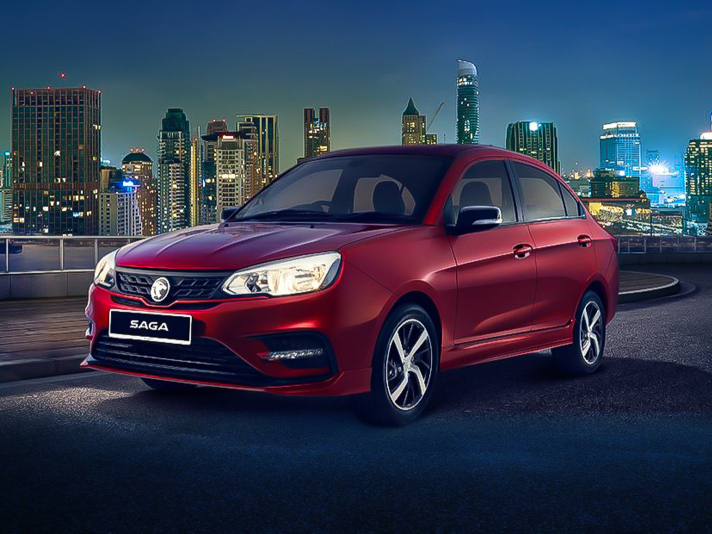
Proton Saga Interior Review: Affordable Yet Stylish for Everyday Use
WilliamJul 17, 2025
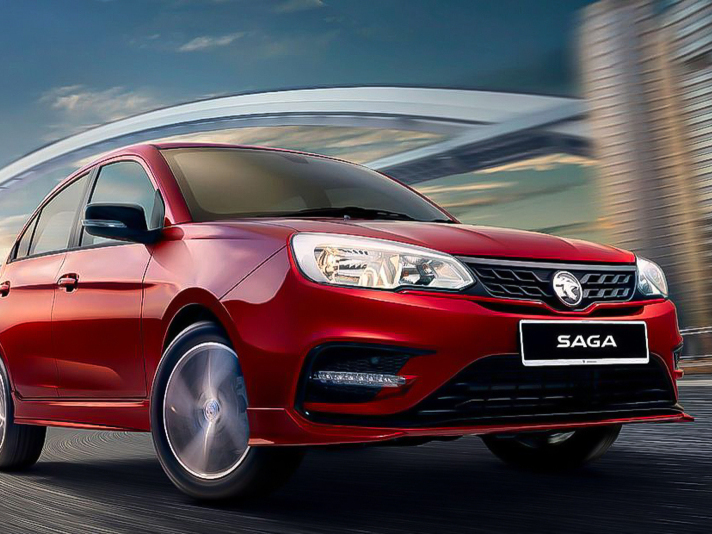
2025 Halfway Mark: All-New Proton Saga Coming Soon!
JohnMay 30, 2025
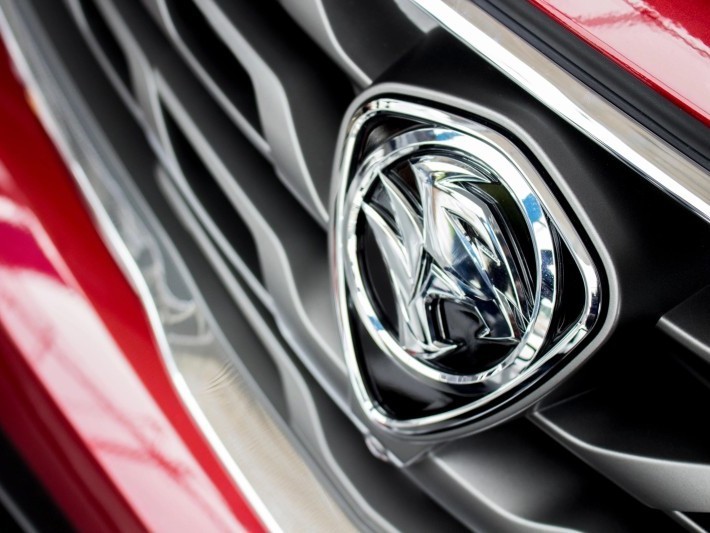
Proton Recorded Sales of 13,918 Vehicles in March, Marking a Significant MOM Increase of 23.9%
AshleyApr 10, 2025
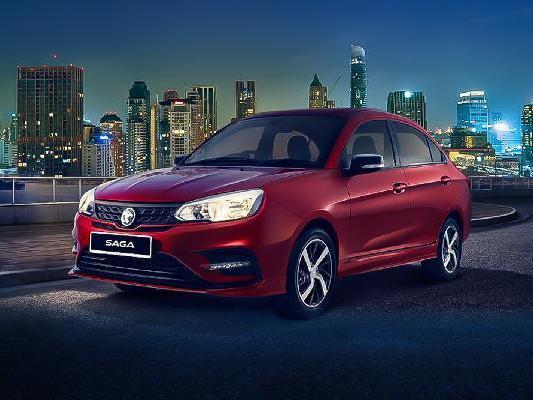
Proton Saga: A Clear Overview of Configurations and Costs of models
LienMar 25, 2025
View More








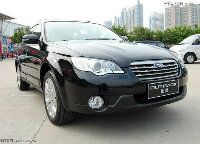

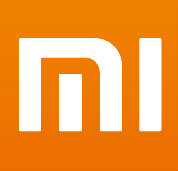

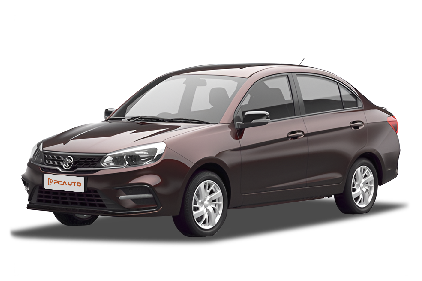

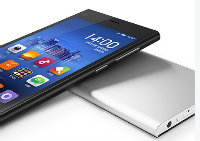


Pros
Cons